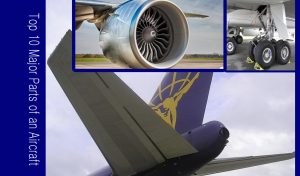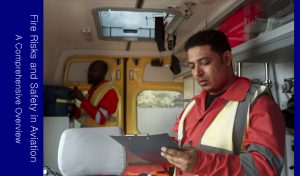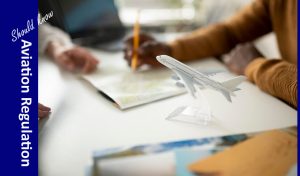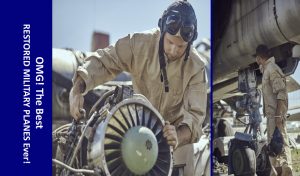Airline safety is a top priority in the aviation industry, and ensuring the safety of passengers and crew members involves a combination of procedures, training, technology, and regulatory oversight. Both inside the cockpit and behind the scenes, numerous steps are taken to maintain and enhance airline safety. To justify the question What Happens in the Cockpit and Behind the Scenes for Airline Safety, Here is an overview of what happens:
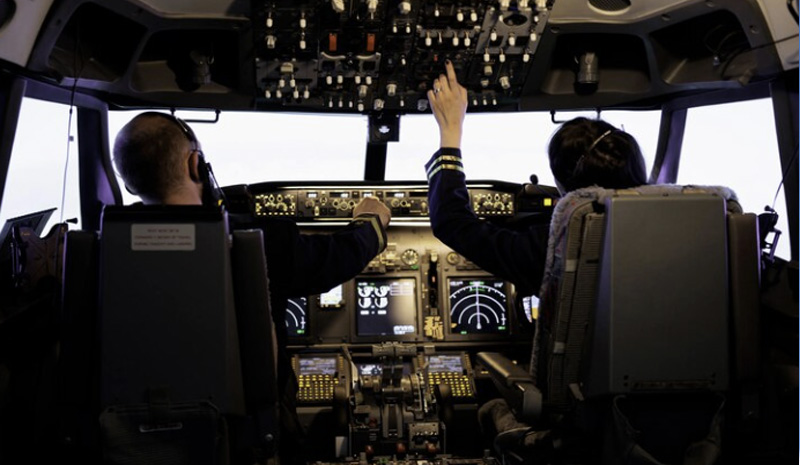
Inside the Cockpit:
A-Pre-flight Checks:
Before each flight, the flight crew conducts a thorough pre-flight inspection of the aircraft. This includes checking systems, controls, instruments, and other critical components to ensure everything is in working order.
B-Flight Planning:
Flight planning is a crucial process in aviation that involves the preparation and organization of all the necessary details for a safe and efficient flight. It encompasses a range of tasks and considerations, from selecting the flight route to calculating fuel requirements. Here are the key aspects of flight planning:
- Route Selection: Choosing the optimal route from the departure airport to the destination is one of the first steps in flight planning. Several factors influence this decision, including airways, waypoints, air traffic, and weather conditions. The goal is to find the most direct and efficient route while avoiding congested or restricted airspace.
- Weather Analysis: Weather is a critical factor in flight planning. Pilots and dispatchers closely monitor weather conditions along the route and at the departure and destination airports. They consider factors such as turbulence, thunderstorms, icing, visibility, and wind patterns. This information helps in selecting a safe and efficient flight path.
- Altitude Selection: Determining the appropriate cruising altitude is essential. Factors like the aircraft’s weight, weather conditions, and air traffic may influence this decision. Pilots need to consider the most fuel-efficient altitude that avoids turbulence and other hazards.
- Weight and Balance Calculations: Maintaining the correct weight and balance of the aircraft is crucial for safe flight. Flight planning includes calculations to ensure that the aircraft’s center of gravity falls within acceptable limits. This is important for stability and control during all phases of the flight.
- Fuel Planning: Accurate fuel calculations are essential to ensure that the aircraft carries enough fuel for the entire journey, including reserves for unexpected delays or diversions. Fuel planning considers the distance of the flight, expected fuel consumption, and alternate airport requirements.
- Aircraft Performance: Flight planners consider the performance characteristics of the specific aircraft being used. This includes the aircraft’s takeoff and landing distances, climb rates, and cruise speeds. Performance data is used to determine the feasibility of the chosen route.
- Air Traffic Control (ATC) Coordination: Flight planners coordinate with air traffic control to obtain clearances and slot assignments. They also file a flight plan with ATC, which includes the planned route, altitude, estimated time of departure (ETD), and estimated time of arrival (ETA).
- NOTAMs and Airspace Restrictions: Flight planners review Notices to Airmen (NOTAMs) and any temporary airspace restrictions or closures that may affect the flight. This includes checking for events like airshows or military exercises that could impact the chosen route.
- Alternate Airport Selection: Flight plans typically include one or more alternate airports. These are backup airports where the aircraft can safely land in case the weather deteriorates at the destination airport or if there are other unforeseen circumstances.
- Communication: Effective communication between flight crew and dispatchers is essential throughout the flight planning process. Pilots must be aware of any changes or updates to the flight plan, weather conditions, or air traffic.
- Flight Plan Filing: After completing all the necessary planning steps, the flight plan is filed with the appropriate aviation authorities and ATC. This formally notifies them of the intended flight and route.
C-Checklists:
Pilots use a series of checklists to ensure they follow standardized procedures for various phases of the flight, including startup, taxi, takeoff, climb, cruise, descent, and landing. These checklists help minimize human error.
D-Communication:
Effective communication inside the cockpit of an aircraft is absolutely essential for the safe operation of the flight. Clear and precise communication among the flight crew members (typically the captain or pilot-in-command and the first officer or co-pilot) is crucial for decision-making, coordination of tasks, and handling emergencies. Here’s an overview of communication in the cockpit:
- Crew Roles and Responsibilities: At the beginning of each flight, the captain and co-pilot establish their roles and responsibilities. The captain is usually responsible for overall command of the aircraft, while the co-pilot assists and takes on various duties as needed.
- Cockpit Resource Management (CRM): CRM is a set of training and procedures designed to improve communication and teamwork in the cockpit. It emphasizes the importance of assertiveness, leadership, communication, and decision-making skills among the flight crew.
- Checklists: Checklists are used for various phases of the flight, such as pre-flight, takeoff, climb, descent, and landing. They ensure that important tasks and procedures are not overlooked. Crew members verbally cross-check and confirm each item on the checklist.
- Standard Phraseology: The aviation industry uses standardized phraseology to reduce the risk of miscommunication. Pilots and air traffic controllers communicate using specific phrases and terminology to ensure clarity. For example, “roger” means “received and understood,” while “wilco” means “will comply.”
- Radio Communications: Pilots communicate with air traffic controllers (ATC) via radio. They follow established procedures for radio communication, including using specific frequencies and adhering to ATC instructions. These communications include obtaining clearances, weather updates, and traffic advisories.
- Crew Briefings: Before each flight and at key points during the journey, the flight crew conducts briefings to discuss important details. This may include the flight plan, weather updates, anticipated turbulence, alternate airports, and emergency procedures.
- Emergency Procedures: In the event of an emergency, crew members rely on clear and concise communication to address the situation. Emergency checklists are often used, and there is a defined hierarchy of communication to ensure that the most critical information is relayed promptly to the decision-maker (usually the captain).
- Traffic Alerts: Crew members communicate and coordinate responses to traffic alerts, especially when using collision avoidance systems. They ensure that both pilots are aware of the situation and take appropriate actions to maintain separation from other aircraft.
- Passenger Announcements: Flight attendants may communicate important information to passengers through the cockpit crew. This can include safety instructions, updates on the flight’s progress, and any changes to the schedule.
- Crew Resource Management (CRM) Training: Flight crew members undergo CRM training to enhance their communication, teamwork, and decision-making skills. CRM training emphasizes open communication, problem-solving, and assertiveness while also respecting hierarchy.
- Non-Verbal Communication: Non-verbal cues, such as hand signals and body language, can also play a role in cockpit communication, especially in noisy or high-stress situations.
E-Monitoring Systems:
Monitoring systems inside the cockpit of an aircraft are critical for ensuring the safety, navigation, and operation of the aircraft. These systems provide the flight crew with essential information about the aircraft’s performance, systems status, and its environment. Here are some of the key monitoring systems found in the cockpit of modern aircraft:
- Flight Instruments:
- Attitude Indicator: This instrument shows the aircraft’s orientation in relation to the horizon, helping the pilot maintain proper attitude and control.
- Altimeter: It displays the aircraft’s altitude above sea level, crucial for maintaining safe vertical separation from other aircraft and terrain.
- Airspeed Indicator: This instrument provides the aircraft’s current airspeed, essential for maintaining safe flight.
- Navigation Systems:
- GPS: Global Positioning System provides precise position information, aiding navigation and route planning.
- VOR/DME: VHF Omni-directional Range and Distance Measuring Equipment are used for navigation by receiving signals from ground-based stations.
- Engine Instruments:
- Engine Indication and Crew Alerting System (EICAS): Displays critical information about the engines, including RPM, temperature, and fuel flow.
- Thrust Management System (TMS): Helps optimize engine performance and fuel efficiency.
- Communication Systems:
- Radio Communications: Cockpit radios are used for air traffic control communication and coordination with other aircraft.
- Weather Radar:
- Weather radar systems provide real-time information on weather conditions, helping pilots avoid turbulence and severe weather.
- Terrain Awareness and Warning System (TAWS):
- TAWS provides warnings and alerts about terrain and obstacles, helping prevent controlled flight into terrain (CFIT) accidents.
- Traffic Collision Avoidance System (TCAS):
- TCAS alerts pilots to the presence of nearby aircraft and provides guidance on avoiding potential collisions.
- Cockpit Voice Recorder (CVR) and Flight Data Recorder (FDR):
- These devices record cockpit conversations and flight data, respectively, to aid in accident investigations.
- Autopilot and Flight Management System (FMS):
- Autopilot systems can control various aspects of flight, and the FMS assists with navigation, flight planning, and route management.
- Fuel Management System:
- Monitors fuel levels, consumption, and balance to ensure safe operation and fuel efficiency.
- Hydraulic and Electrical Systems:
- Monitors the status of critical systems like landing gear, flaps, and other control surfaces.
- Emergency Systems:
- Fire detection and suppression systems, emergency oxygen masks, and emergency lighting are monitored for quick response in case of emergencies.
- Cabin Pressure and Temperature Control:
- Systems that maintain a comfortable and safe cabin environment are monitored to ensure passenger comfort and safety.
- Warning and Alerting Systems:
- Various warning lights, audio alarms, and annunciator panels provide immediate alerts to the flight crew in case of anomalies or system malfunctions.
F-Emergency Procedures:
Emergency procedures in the cockpit are crucial for the safety of the aircraft and its occupants. Flight crews are extensively trained to handle various emergency situations that may arise during a flight. Here are some common emergency procedures that pilots follow inside the cockpit:
- Engine Failure:
- If an engine fails during flight, the pilot will follow specific procedures for that aircraft type to identify the failed engine and take appropriate actions.
- This may include shutting down the affected engine, feathering the propeller (for propeller-driven aircraft), and adjusting the aircraft’s attitude and airspeed to maintain control.
- Fire or Smoke:
- If there is a fire or smoke in the cockpit or cabin, the flight crew will immediately don oxygen masks, initiate emergency descent procedures, and follow the aircraft’s fire suppression system checklist.
- Loss of Pressurization:
- In the event of a sudden loss of cabin pressure, pilots will initiate an emergency descent to a safe altitude where passengers and crew can breathe without supplemental oxygen. Oxygen masks will be deployed for use in the cockpit and cabin.
- Hydraulic System Failure:
- If there is a failure in the aircraft’s hydraulic system, pilots will follow procedures to maintain control of the aircraft using backup or manual control systems.
- Electrical System Failure:
- In the case of electrical system failure, the aircraft may switch to backup or emergency electrical systems to maintain essential systems like communication and navigation.
- Bird Strikes:
- If a bird strike occurs, the pilot will follow procedures for assessing damage and may decide to return to the airport for inspection or continue with the flight, depending on the severity of the damage.
- Emergency Landing:
- In the event of a catastrophic failure or other situations where a safe landing is not possible at the intended destination, pilots may declare an emergency and initiate an emergency landing at the nearest suitable airport or landing area.
- Evacuation:
- If an emergency evacuation is required, the flight crew will follow specific procedures to ensure the safe and orderly evacuation of passengers and crew, including the use of emergency slides and life rafts.
- Communication:
- Pilots will communicate with air traffic control (ATC) and declare an emergency if necessary. ATC will provide guidance and assistance to the aircraft in distress.
- Navigation:
- In the event of a navigation system failure, pilots will rely on backup navigation aids, such as radio beacons or GPS, to maintain course and reach a suitable landing site.
- Weather-related Emergencies:
- Pilots will take appropriate actions when encountering severe weather conditions, such as turbulence, thunderstorms, or icing, including deviating from the planned route to avoid hazardous weather.
- Hijacking or Security Threats:
- In the event of a hijacking or security threat, flight crews are trained to follow specific procedures to ensure the safety of passengers and crew while cooperating with relevant authorities.
Emergency procedures are well-documented in aircraft operating manuals, and flight crews receive recurrent training to ensure they can respond effectively and calmly in high-stress situations. The specific procedures and checklists may vary depending on the aircraft type and airline, but safety and the well-being of passengers and crew are always the top priorities.
Behind the Scenes:
- Maintenance: Airlines have rigorous maintenance programs to keep their aircraft in top condition. Trained mechanics inspect, repair, and maintain aircraft according to strict schedules and regulations. Any issues are addressed promptly.
- Safety Inspections: Regulatory authorities like the Federal Aviation Administration (FAA) in the United States conduct regular safety inspections of airlines to ensure they comply with safety regulations.
- Crew Training: Flight crews (pilots, flight attendants, and maintenance personnel) undergo extensive training and recurrent training to keep their skills up-to-date. This training includes emergency procedures, evacuation drills, and safety protocols.
- Safety Management Systems (SMS): Airlines implement SMS to proactively identify and mitigate safety risks. This includes reporting and analyzing safety incidents or near-misses to prevent them from happening again.
- Regulatory Oversight: Government agencies like the FAA, European Union Aviation Safety Agency (EASA), and others oversee and regulate airline safety. They establish and enforce safety standards, conduct audits, and investigate accidents.
- Technology: Airlines invest in the latest aviation technology, including weather forecasting, navigation systems, and communication equipment, to enhance safety. Additionally, aircraft are equipped with collision avoidance systems and advanced avionics.
- Security Measures: Airlines also focus on security to prevent acts of terrorism or unlawful interference. This involves passenger and baggage screening, cockpit security procedures, and collaboration with security agencies.
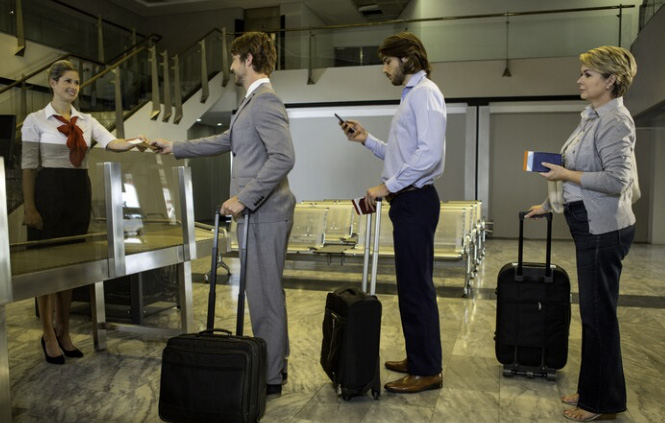
Airline safety is a complex and multi-faceted endeavor that involves the cooperation of various stakeholders, including the airline industry, regulatory bodies, and aviation professionals. The goal is to create a safe and secure environment for air travel for passengers and crew members alike.
Here are some additional details about safety measures in the cockpit and behind the scenes:
- Cockpit: The cockpit is designed to be safe and efficient for pilots to operate the aircraft. It is equipped with a variety of instruments and controls, as well as safety features such as ejection seats and crash-resistant seats.
- Maintenance: Aircraft are regularly inspected and maintained by qualified technicians to ensure that they are airworthy. This includes inspecting the aircraft’s structure, engines, and systems.
- Regulations: The aviation industry is subject to strict regulations by government agencies such as the Federal Aviation Administration (FAA). These regulations cover all aspects of flight operations, from pilot training to aircraft maintenance.
Airlines also have their own safety programs and procedures in place. These programs include training for pilots and cabin crew, safety audits, and incident reporting.
Overall, the aviation industry is committed to safety, and there are a number of measures in place to ensure the safety of passengers and crew.
FAQs
Q: What is the most important thing that pilots do?
A: The most important thing that pilots do is to ensure the safety of their passengers and crew. They do this by monitoring the aircraft’s performance, navigating, and communicating with air traffic control.
Q: What is the most challenging part of being a pilot?
A: The most challenging part of being a pilot is dealing with unexpected events. This could include bad weather, mechanical problems, or medical emergencies. Pilots must be able to think quickly and make good decisions under pressure.
Q: What is the most rewarding part of being a pilot?
A: The most rewarding part of being a pilot is knowing that you are responsible for safely transporting people from one place to another. It is also a very rewarding experience to fly an airplane and see the world from a different perspective.
